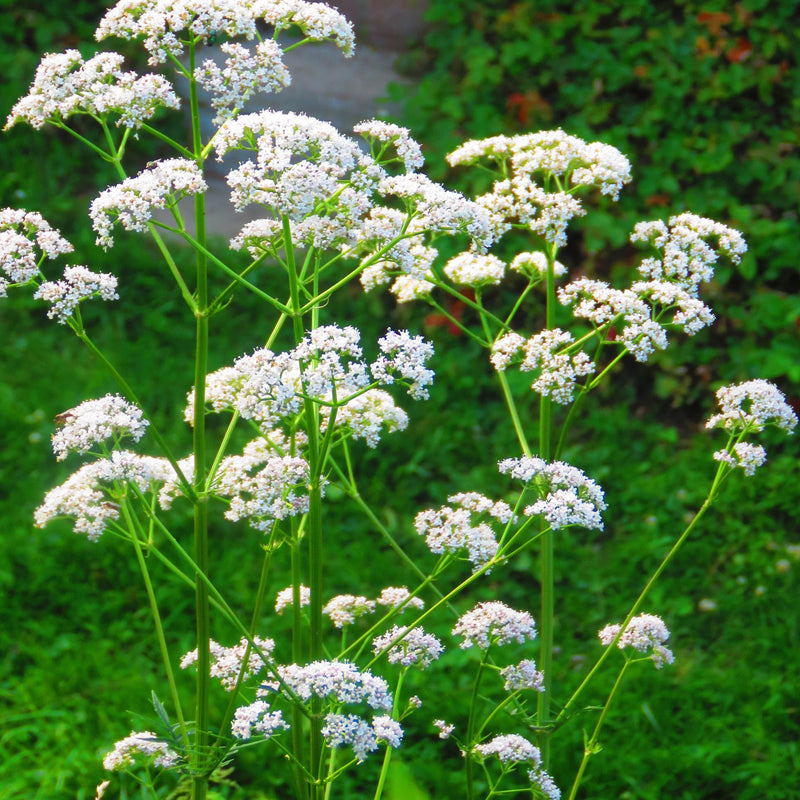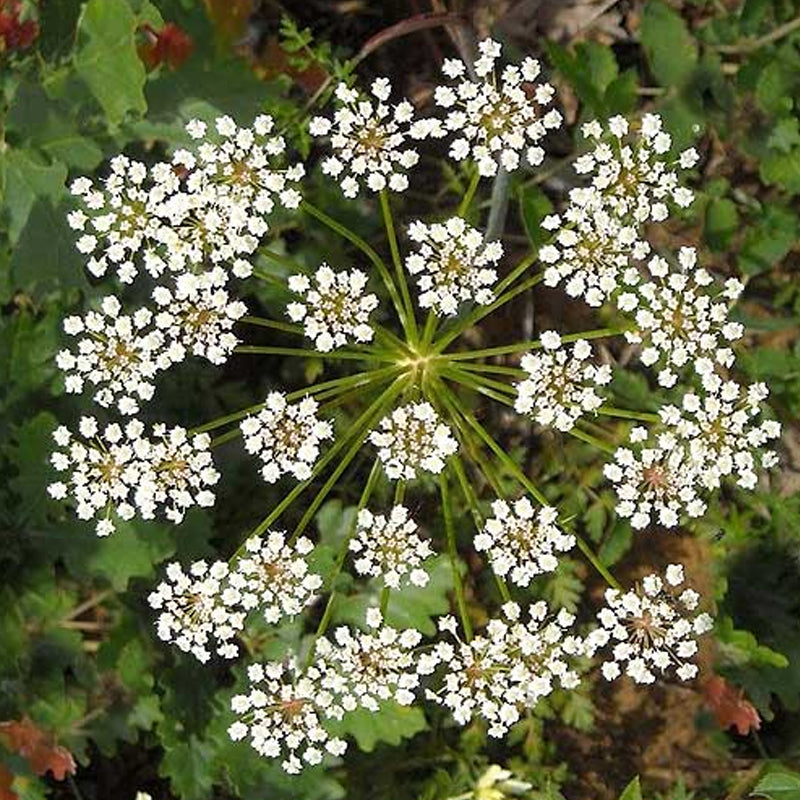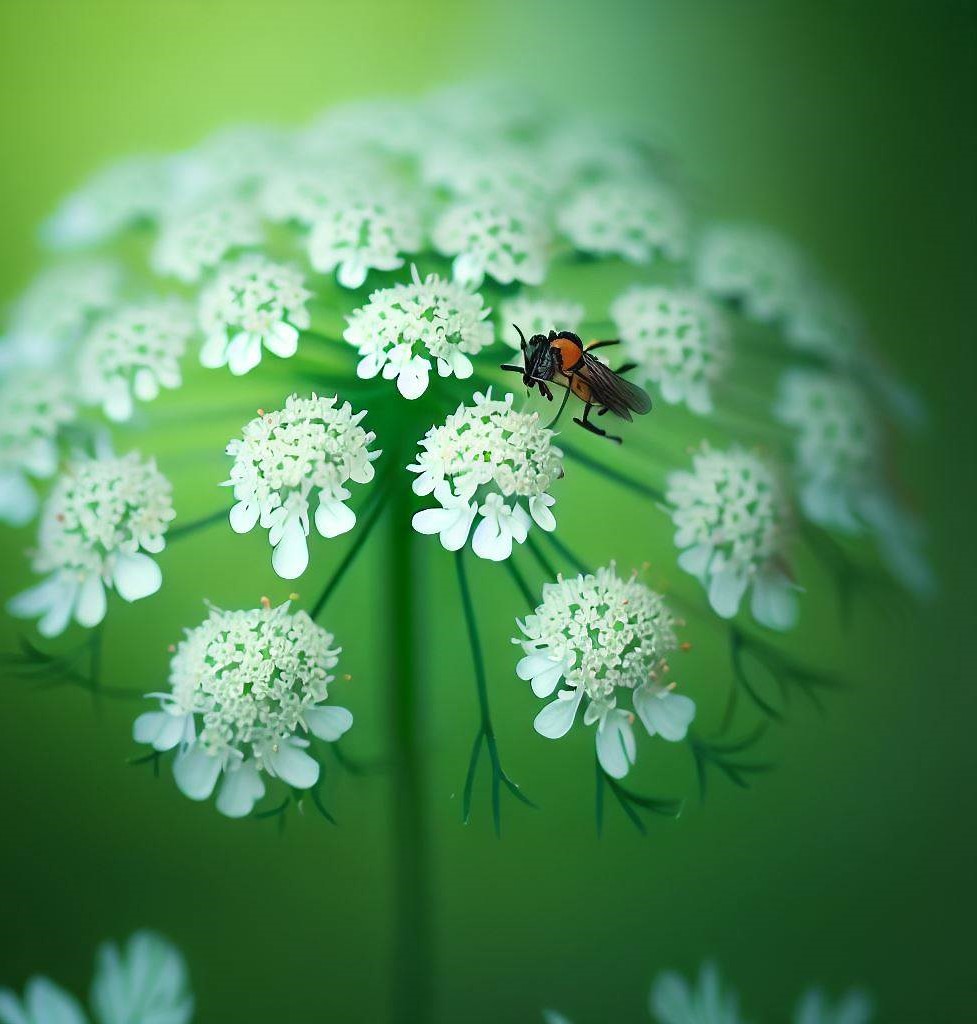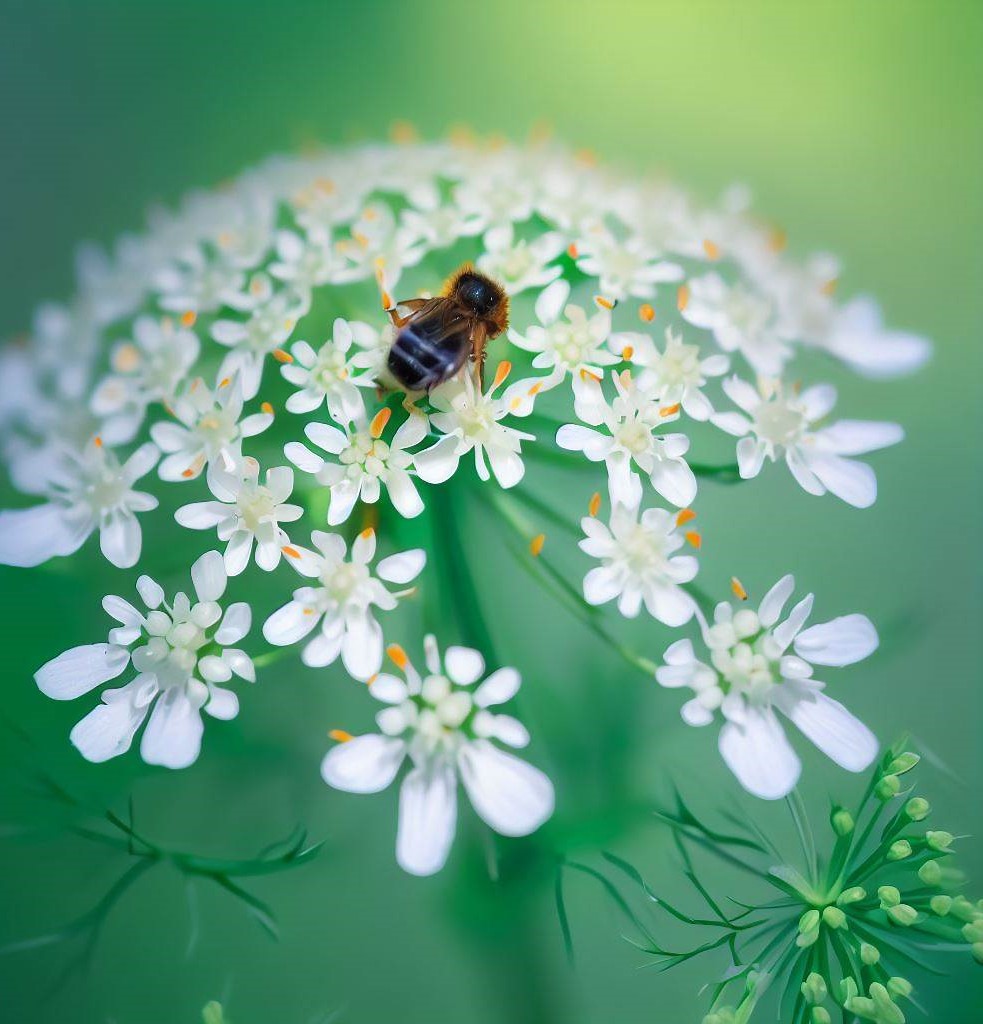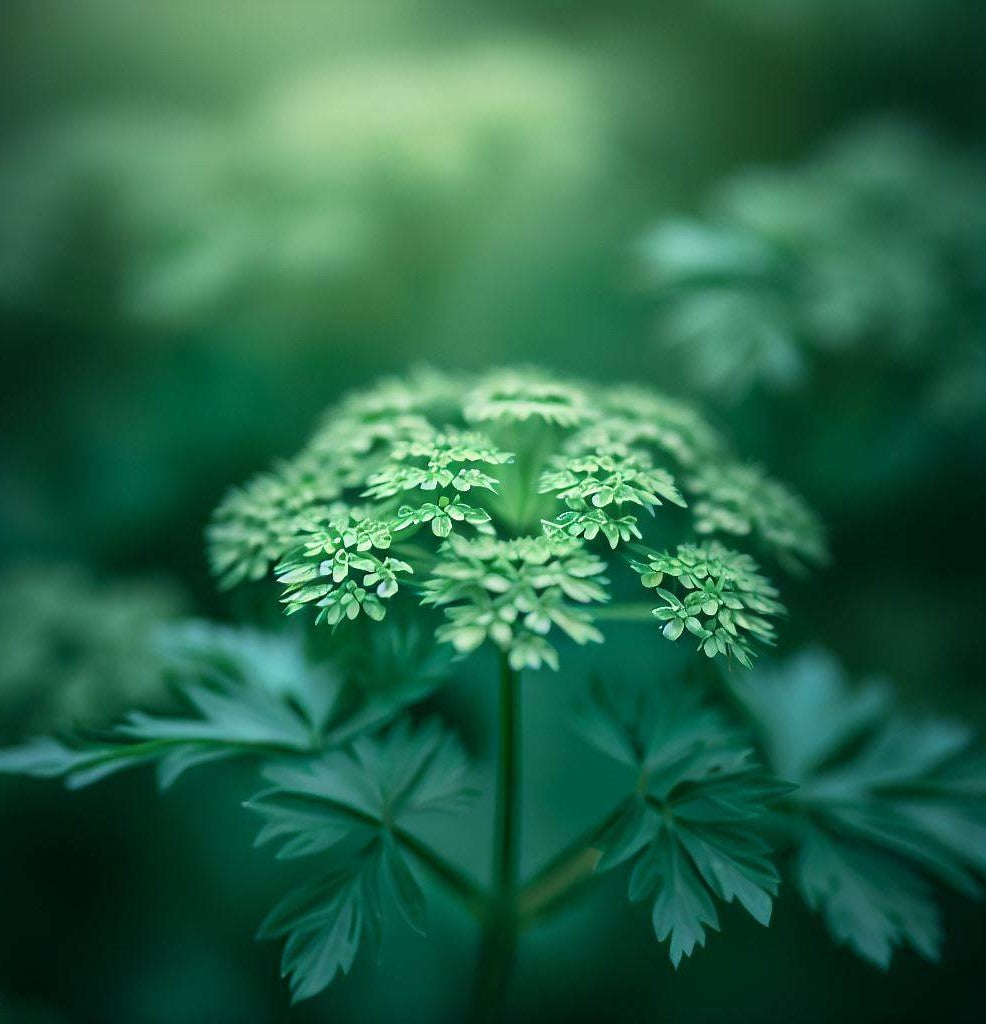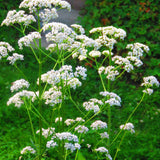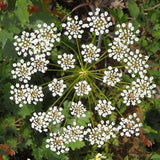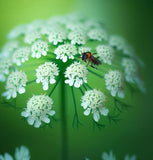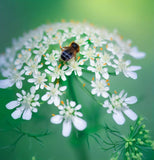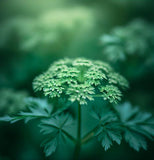Anise (Pimpinella anisum)
Anise (Pimpinella anisum) is an annual flowering plant that belongs to the Apiaceae family. It is native to the eastern Mediterranean region and Southwest Asia and is widely cultivated for its seeds, which are used as a spice and flavoring agent in various cuisines and herbal remedies.
Description: Anise plants typically grow to a height of about 30-50 centimeters (12-20 inches). They have feathery leaves and small white flowers arranged in umbels. The fruits of anise, also known as seeds, are small, oval-shaped, and light brown in color.
Culinary Uses: Anise seeds have a distinct sweet and licorice-like flavor and aroma. They are commonly used as a spice in cooking and baking, particularly in Mediterranean, Middle Eastern, and South Asian cuisines. Anise is an essential ingredient in various dishes, such as bread, cookies, cakes, candies, and liqueurs like absinthe, ouzo, and sambuca.
Medicinal Uses: Anise has a long history of use in traditional medicine. It is believed to have digestive, carminative, and expectorant properties. Anise tea is often consumed to alleviate digestive issues, such as bloating, indigestion, and colic. The essential oil derived from anise seeds is used in aromatherapy for its calming and soothing effects.
Flavoring Agent: Anise is used as a flavoring agent in the production of alcoholic beverages, including liqueurs, spirits, and bitters. Its distinctive taste adds depth and complexity to these beverages.
Herbal Remedies: Anise is also used in herbal remedies to address various health conditions. It is sometimes used as an ingredient in cough syrups, throat lozenges, and expectorants due to its expectorant and soothing properties. Anise oil is used topically in some cultures for treating lice.
Other Uses: Anise has been used as a fragrance in soaps, perfumes, and cosmetics. It can also be found in toothpaste and mouthwashes due to its natural breath-freshening properties.
Overall, anise is a versatile plant with culinary, medicinal, and aromatic uses, primarily known for its distinctive sweet and licorice-like flavor.
Botanical name : Pimpinella anisum
Common name : Anise
Life cycle : Annual , tender perenniaal
Days to maturity : 120
Light requirement : Full sun
Planting time : Spring and summer
Sowing method : Direct sow
Planting depth : ¼”
Plant spacing : 12”- 18”
Ships : Year-round
Average seed per ounce : Approx. 12000

